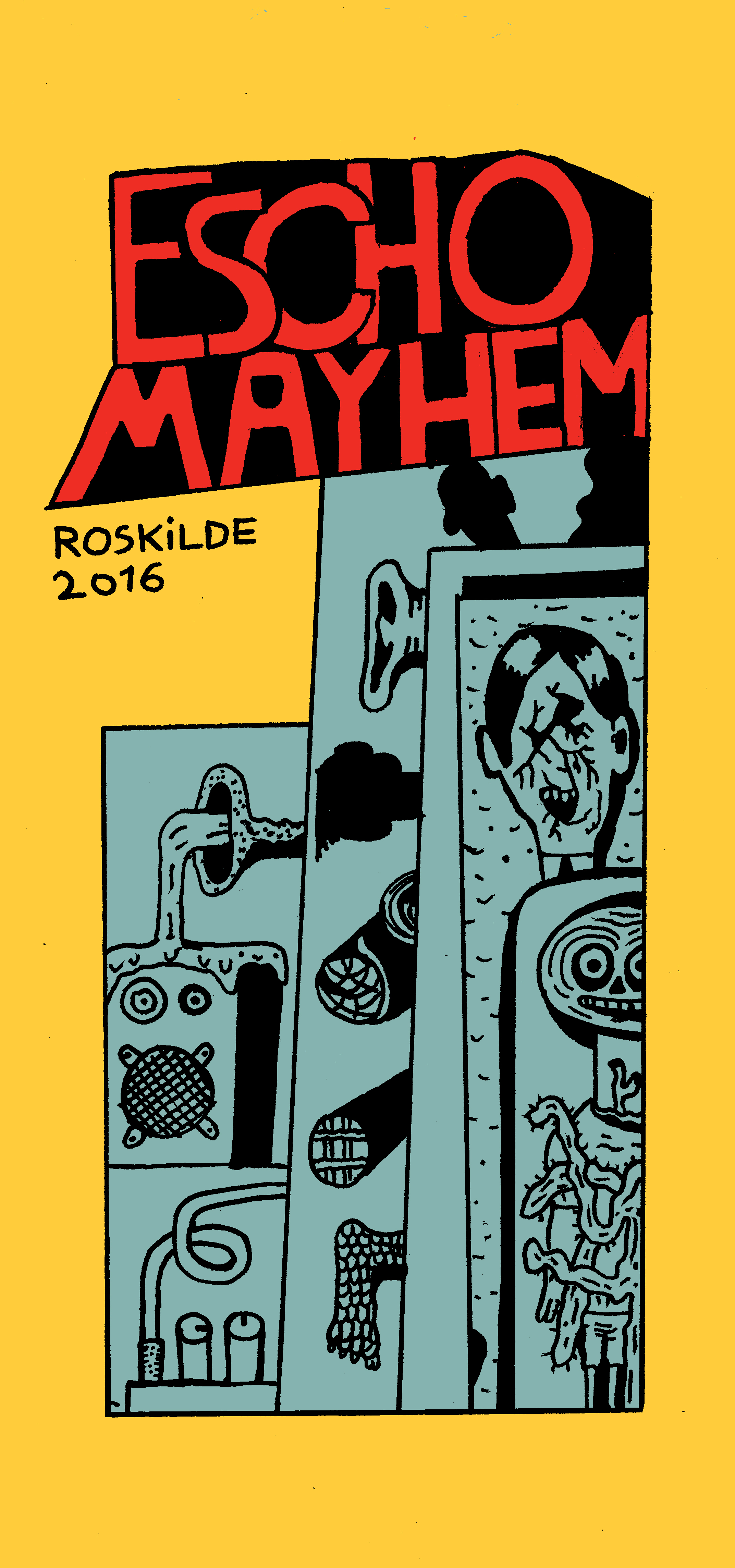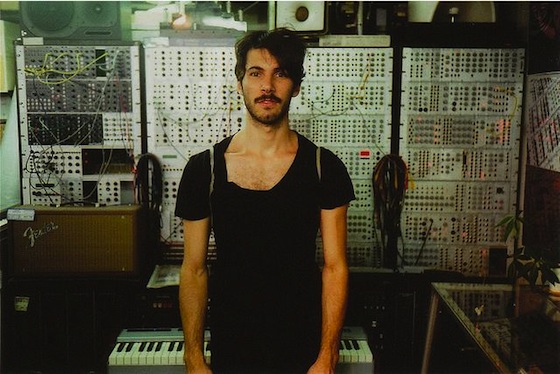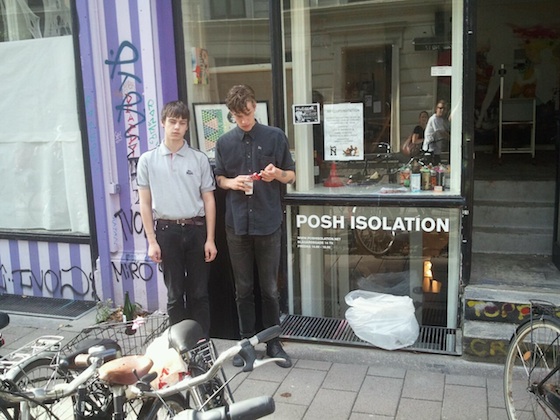Tomutonttu – Biomimetics and the love for radical high quality social gatherings (Interview)

Af Simon Christensen. Foto Jukka Salminen / Tiikerikuva.
Sidste efterår gav den finske elektroniske musiker Jan Anderzen én af de bedste koncerter på Festival Of Endless Gratitude 2012 under sit Tomutonttu-alias. Måske fordi han var i gang med at lave en ny og ret udadvendt plade. Derfor sendte vi ham en email-pakke med spørgsmål til baggrunden for hans musik. Intet skete. Og så. På årsdagen for mailen sendte han svarene retur. Konteksten er glemt i mellemtiden, men til gengæld er han nu aktuel i Danmark i denne uge på Lak Festival, der sætter fokus på nordisk lydkunst.
Jan Anderzen er fra Tampere og én del af kernen omkring det toneangivende finske label Fonal Records – og har været det i en årrække. Hans soloprojekt er Tomutonttu (”støvånden”), han dannede Kemialliset Ystävät og er medlem af Avarus, Tuusanuuskat og Islaja. Han har gennem tiden udgivet en lang række plader i forskellige oplag, blandt andet med udgangspunkt i freefolk og realoptagelser med analoge/mikrobiologiske undertoner, og sidste gang han var i Danmark var det nærmest techno. Kendetegnet for Anderzens musik er, at den er humoristisk og overskrider musikkens sprog ved at have en superunderlig og frenetisk måde at bruge samples og sit hoved på. Tomutonttu udgav sidste år ”Hylyt”, der er mastereret af Rashad Becker (Pan Act m.fl.).
Tomutonttu is one of his longest running projects and easily his most adventurous and consummate – combining otherwordly dada electronics, psychedelic ethno collages, animal noises, warped voice samples, synth flutter – all presented with a certain warmth and DIY charm that makes even the most chaotic freeform pieces accessible in an unexpectingly genial way.
Passive/Aggressive: When do you ever feel lost?
Jan Anderzen: – I feel lost with my art all the time. Good thing about getting older is that you learn to cope with those kind of feelings. Also, when you get lost you end up wondering to strange places that are further away from the well known trails. It’s a good thing.
How much do you look for structure, how much for freedom and improvisation?
– The tension between patterns, repetition, self-imposed moronic rules and then the more chaotic, uncontrollable and ”free” elements is the essence of my music. I work with similar kind of dynamics when painting. It comes down to my observations of the world order.
What do you value in music, both as an artist and music listener?
– My take on music is pretty functional. As we all know it is in the nature of music to penetrate straight to the very core of human psyche. That’s why it is a very powerful tool in shaping or fine tuning our every day reality. Even more so than the shape of a piece of furniture I think.
In terms of electronic music, do you consider yourself a soundscape artist, an entertainer or an conjurer of weird dance moves, e.g.? – In what way?
– Most of the art that shakes me is also very entertaining. Labeling what I do often connects to questions of funding and bureaucracy.
What made you start to play music, and what keeps your fire burning for this?
– As a child I wasn’t too interested in picking up an instrument. I did enjoy listening to music a lot. As a teenager I developed an ear for strange sounds and started exploring all these magical hidden histories. At some point the DIY bug got me and I had to try it myself. I have invested an endless amount of time to deep listening and to my personal musical research. It’s the one thing I’m kind of good at. I see no other options but to enjoy the ride. All aspects of it.
What instruments are you using/exploring in TMTU and KY respectively?
– Nowadays I’m mostly using samples and pretty basic tools to edit and arrange them. And then synthesizers. In KY other participants bring in their arsenal of sound makers.
Where do you pick up your samples/field recordings?
– Most of the samples come from my collection of traditional music from around the world. But other sources too. I might get a flute solo from the collective memory banks, Youtube etc. It’s pretty random and intuitive.
Can you live of making music?
– Not at all. I do get grants every now and then but usually from the visual art funds.
What do you do when not listening to music… sauna?
– I’m one of the few Finns who doesn’t enjoy sauna. I work part time at an art center and then half of the day at our studio making my own art. Then I cook really good food with my wife and watch some Danish television shows.
In what way does Finland and Finish culture inspire your music, and how does it make it different?
– There seems to be a deep rooted hatred for art among the Finnish music journalists. It makes me grow stronger. Especially since the internet got big I’ve felt less and less like a Finn. Sorry if it’s a cliche but I travel on the space ship earth and I make music for all the fellow passengers.
The times you have been to Denmark – what has it been like?
– I played my first ever solo show in Copenhagen. It was also my first show outside Finland. I remember having my first really good falafel before the show. For some reason good falafels are hard to come by over here in Tampere. I’ve always had a great time in Denmark and enjoy the vibe.
It seems like there is a strong kindship in European underground music for instance between PAN, Hundebiss, Alter Records and Fonal… You travel around and play lots of shows in Europa too – what do you think makes this possible?
– Having done it for quite a while now I’ve become to have a network of likeminded music enthusiasts and friends around the world. Setting up a tour with just a couple of e-mails is almost too easy. But I think what makes it possible is that I enjoy it a lot. I don’t have any rock star fantasies just a deep love for radical high quality social gatherings and warm encounters with fellow travelers.
Info: Lak Festival er en festival for nordisk lydkunst, som finder sted på det gamle fabriksområde ved Prags Boulevard den 26.-.29. september (RSVP) med blandt andre Lasse Marhaug, Valby Vokalgruppe, Tomutonttu, Haxholm/Kirstein, Puce Mary, Syntjuntan m.fl. samt en række workshops fra mandag den 23. september kurateret af Derek Holzer (US/DE), som også gerne skulle udmønte sig i koncertoplevelser. Af hensyn til kapacitet er der kun et begrænset antal billetter til salg, og der blev udsolgt sidste år.



